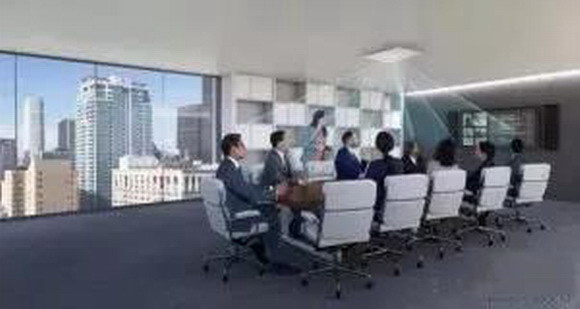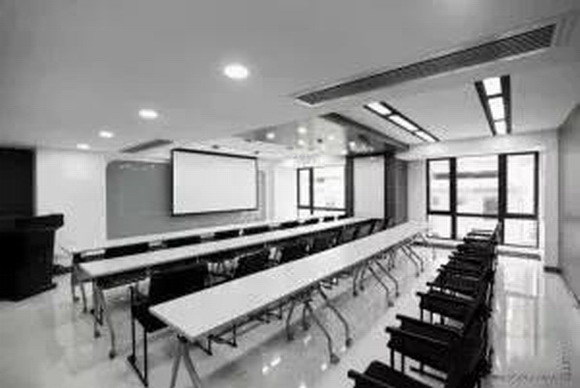Conference microphone system: Speak clearly, hear clearly!
Interaction - Communication among colleagues, between teachers and students, and among board members is the most critical aspect of a meeting.
It is the video conferencing system that allows participants in different locations to communicate smoothly, but the communication between people in the same room is often overlooked.
Traditional audio systems allow the audience to hear the speaker or lecturer, but they do not enable listeners to clearly hear each other.

Why can't we hear clearly?
1. Volume levels naturally decrease with distance.
As the distance between the speaker and the audience increases, the volume level naturally decreases.
In a typical indoor environment, the frequency range that is crucial for speech recognition - mid to high frequencies - is often first canceled out by background noise and chaotic sound wave reflections.

2. Sound propagates forward from the speaker's mouth.
Since sound primarily propagates forward from the speaker's mouth, this effect becomes more pronounced when people are not facing each other.
However, even in face-to-face communication, if a person sitting at one end of the room does not project their voice, the person at the other end may not be able to hear what they are saying.
Worse still, people may not complain about these issues because they think they are the only ones who cannot hear clearly.

Solution: Voice Enhancement
The solution to this problem is a special audio system called 'voice enhancement.'
The voice enhancement system amplifies the voices of people in a specific area of the room to a sufficient level so that people in other areas of the room can clearly hear them.
Unlike traditional amplification systems, the voice enhancement system only enhances the frequency range that is most critical for speech recognition and only restores the volume loss caused by distance between the speaker and the audience.
Typically, the voice enhancement system can increase the volume level in the room by 3 to 6 decibels at most. The effect is very natural and subtle, so many users only realize the presence of voice enhancement when they turn off the audio system.

How the Voice Enhancement System Works
A typical voice enhancement system is similar to a traditional amplification system, consisting of microphones, digital signal processors, amplifiers, and speakers.
The main difference is that it divides the room into different areas, and a microphone in one area is only connected to speakers in other areas.
While standard desktop microphones can be used with the voice enhancement system, ceiling microphones are a better solution.
First, the microphone must have a very tight polar pattern to avoid picking up sound from the speakers; otherwise, feedback will occur and render the voice enhancement system ineffective.
Second, the pickup area of each microphone must be accurately directed to capture the desired voice.
Common hanging omnidirectional or cardioid microphones cannot provide sufficient voice enhancement without causing feedback, and even most array microphones are inadequate in this regard.

When is it suitable to use a voice enhancement system?
Voice enhancement technology is suitable for large rooms where participants at both ends of the room have difficulty hearing each other.
Typically, the minimum room size is about 12 meters by 12 meters, with a distance of at least 7.6 meters between the speaker and the audience; these figures can serve as a suitable reference.
Because if it is still difficult to hear each other in a room smaller than this, it may be necessary to address excessive noise from sources such as air handling, corridor traffic, and electronic devices through acoustic means.
Theoretically, there is no limit to the size of the room for installing a voice enhancement system; rather, the height of the ceiling has a greater impact on the success of the system than the size of the room.
In most cases, ceiling microphones are installed between 2.4 meters and 3.6 meters above the floor, depending on the indoor sound field, and they may also be installed at higher positions.
Voice enhancement is very effective in many applications and environments, especially in interactive and multi-directional conversations, such as those involving many students or participants as the audience, along with a main lecturer or speaker at the podium.
In training rooms, reporting halls, and even large conference rooms, voice enhancement allows participants in any position within the room to hear the sounds throughout the room more easily.

When the voice enhancement system is set up correctly, communication becomes so natural that participants do not even realize whether it is on until you turn it off.
Whether asking the speaker to move to a standing microphone or waiting for the microphone to be delivered to them can create awkward waiting times, significantly diminishing the live effect.
The voice enhancement system enables smoother and easier communication, allowing each participant to converse, move, and interact naturally without worrying about being constrained by hardware.
Control and Configuration
During video conferences or when people collaborate in small groups, the voice enhancement system may not be needed; however, when everyone is sharing their thoughts in the room, the voice enhancement feature can be activated so that each group can hear each other.
The MXA910 can allocate and call templates with specific microphone pickup patterns, simplifying the configuration process.
By simply selecting the room control system, the microphones will be correctly configured when the room is divided or combined for simple speeches and presentations or set up for interactive training course scenarios. Voice enhancement configuration can be activated only when needed.
It is crucial to choose a system integrator with experience in voice enhancement systems and who allows necessary adjustments during the debugging phase.
An experienced installer will first optimize the equalization of the speakers, which is very important for ensuring system stability and achieving the expected volume levels in each area.

The changes brought about by installing the correct voice enhancement system are subtle; after proper configuration, many people may not even perceive that the system has been turned on.
However, when the system is turned off, they realize that some potential technical means made the previous communication much easier. This is the role of an effective voice enhancement system - it makes the entire communication experience more natural.
The voice enhancement system takes this experience to a new level, providing multifunctional audio solutions that economically and easily enhance participants' ability to listen, understand, and communicate.

WEISHITE Audio Technology (Guangzhou) Co., Ltd
Address: 5th Floor, No. 11, Area A5, Lixin Road, Huimei New Village, Xintang Town, Zengcheng District, Guangzhou City
E-mail :caoyaoyu@gztsaudio.com

@2025 WEISHITE Audio Technology (Guangzhou) Co., Ltd All rights reserved

